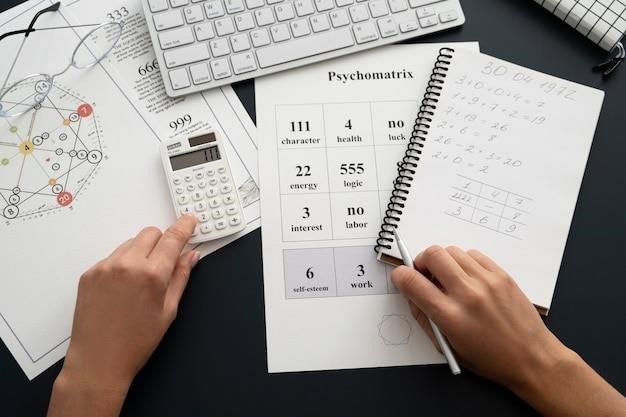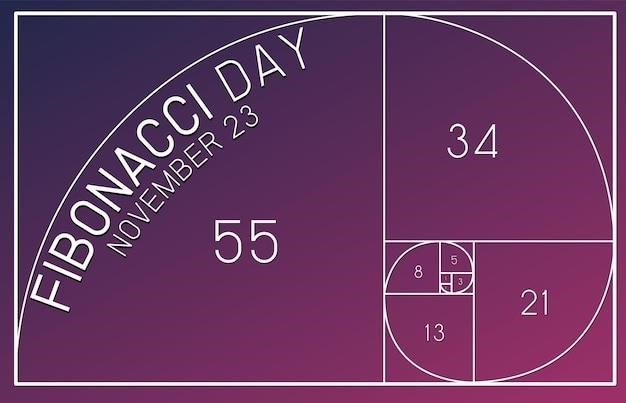Divisibility Rules
Divisibility rules are a set of guidelines used to determine whether a number is divisible by another number without performing the actual division. These rules are based on the properties of numbers and can be applied to both integers and decimals. They are helpful for simplifying calculations, especially when working with large numbers.
Introduction
In the realm of mathematics, the concept of divisibility plays a fundamental role, shaping our understanding of numbers and their relationships. Divisibility refers to the ability of one number to be divided evenly by another number, leaving no remainder. Understanding divisibility rules is essential for various mathematical operations, including factorization, simplification, and problem-solving. These rules provide a shortcut for determining whether a number is divisible by another without performing the actual division, saving time and effort.
Imagine a scenario where you are presented with a large number and asked to determine if it is divisible by 3. Performing the division would be time-consuming and cumbersome, especially if the number is complex. However, by applying the divisibility rule for 3, you can quickly determine whether the number is divisible without going through the lengthy process of division.
Divisibility rules are not merely mathematical curiosities; they have practical applications in various fields. For example, in accounting, divisibility rules are used to verify the accuracy of calculations involving sums of money. In computer science, divisibility rules are used in algorithms for data processing and optimization. And in everyday life, divisibility rules can help us make quick decisions about quantities, such as determining if a group of people can be divided evenly into smaller groups.
Divisibility by 2
The divisibility rule for 2 is one of the simplest and most widely known. It states that a number is divisible by 2 if its last digit is even, meaning it is either 0, 2, 4, 6, or 8. This rule is based on the fact that any even number can be expressed as 2 multiplied by another integer.
For instance, the number 124 is divisible by 2 because its last digit, 4, is even. We can verify this by dividing 124 by 2, which results in 62 with no remainder. On the other hand, the number 357 is not divisible by 2 because its last digit, 7, is odd.
The divisibility rule for 2 is particularly useful when working with large numbers or when performing calculations involving even numbers. For example, if you are asked to determine if the sum of two even numbers is divisible by 2, you can immediately conclude that the sum is also even and therefore divisible by 2. This rule simplifies calculations and eliminates the need to perform the actual division.

Divisibility by 3
The divisibility rule for 3 is a bit more complex than the rule for 2, but still relatively straightforward. A number is divisible by 3 if the sum of its digits is divisible by 3. This rule stems from the fact that any number can be expressed as a sum of multiples of 3, and the sum of the digits represents the sum of these multiples.
For example, consider the number 279. The sum of its digits is 2 + 7 + 9 = 18. Since 18 is divisible by 3, we can conclude that 279 is also divisible by 3. To verify this, we can divide 279 by 3, which results in 93 with no remainder.
Conversely, consider the number 451. The sum of its digits is 4 + 5 + 1 = 10. Since 10 is not divisible by 3, we can conclude that 451 is also not divisible by 3. This can be confirmed by dividing 451 by 3, which results in a remainder of 1.
The divisibility rule for 3 is particularly helpful when dealing with large numbers where performing the actual division would be tedious. It allows us to quickly determine if a number is divisible by 3 without having to go through the lengthy process of division.
Divisibility by 4
The divisibility rule for 4 is based on examining the last two digits of a number. A number is divisible by 4 if the number formed by its last two digits is divisible by 4. This rule is derived from the fact that any number can be expressed as a sum of multiples of 4, and the last two digits represent the multiple of 4 that corresponds to the units and tens places.
For instance, take the number 1236. The last two digits form the number 36, which is divisible by 4 (36 ÷ 4 = 9). Therefore, we can conclude that 1236 is also divisible by 4. To confirm, we can divide 1236 by 4, which results in 309 with no remainder.
Consider another example, the number 5721. The last two digits form the number 21, which is not divisible by 4. Therefore, we can conclude that 5721 is also not divisible by 4. This can be verified by dividing 5721 by 4, which results in a remainder of 1.
The divisibility rule for 4 proves particularly useful when dealing with large numbers. It offers a quick and convenient method to determine if a number is divisible by 4 without engaging in the full division process. This rule makes it easier to identify numbers divisible by 4, especially in scenarios where time is a constraint or mental calculations are preferred.
Divisibility by 5
The divisibility rule for 5 is incredibly straightforward and easy to apply. A number is divisible by 5 if its last digit is either a 0 or a 5. This simple rule stems from the fact that any number can be expressed as a sum of multiples of 5, and the last digit represents the multiple of 5 that corresponds to the units place.
For instance, consider the number 1235. The last digit is 5, which satisfies the divisibility rule. Therefore, we can conclude that 1235 is divisible by 5. To confirm, we can divide 1235 by 5, which results in 247 with no remainder.
Take another example, the number 7840. The last digit is 0, which also satisfies the divisibility rule. Therefore, we can conclude that 7840 is divisible by 5. To confirm, we can divide 7840 by 5, which results in 1568 with no remainder.
Now, let’s consider the number 6923. The last digit is 3, which does not meet the divisibility rule. Therefore, we can conclude that 6923 is not divisible by 5. This can be verified by dividing 6923 by 5, which results in a remainder of 3.
The divisibility rule for 5 is especially valuable for quickly identifying numbers divisible by 5, particularly when dealing with large numbers or when performing calculations mentally. Its simplicity and ease of application make it a highly practical rule for various mathematical tasks.
Divisibility by 6
A number is divisible by 6 if it satisfies two conditions⁚ it must be divisible by both 2 and 3. This rule combines the individual divisibility rules for 2 and 3, making it a slightly more complex but still manageable test. To determine if a number is divisible by 6, simply check if it is even (divisible by 2) and if the sum of its digits is divisible by 3. If both conditions are met, the number is divisible by 6.
For example, consider the number 312. It’s even, indicating it’s divisible by 2. Additionally, the sum of its digits (3 + 1 + 2 = 6) is divisible by 3. Therefore, 312 satisfies both conditions and is divisible by 6. We can confirm this by dividing 312 by 6, which results in 52 with no remainder.
Let’s examine another example⁚ 486. It’s even, indicating it’s divisible by 2. The sum of its digits (4 + 8 + 6 = 18) is also divisible by 3. Therefore, 486 satisfies both conditions and is divisible by 6. We can confirm this by dividing 486 by 6, which results in 81 with no remainder.
Now, consider 525. While it’s divisible by 3 (5 + 2 + 5 = 12), it’s not even; Therefore, it doesn’t satisfy both conditions and is not divisible by 6. Dividing 525 by 6 results in a remainder of 3. This demonstrates that a number must meet both divisibility rules for 2 and 3 to be divisible by 6.

The divisibility rule for 6 is a valuable tool for quickly identifying numbers divisible by 6, especially when working with larger numbers or when performing mental calculations. By combining the rules for 2 and 3, it simplifies the process of determining divisibility by 6.
Divisibility by 8
To determine if a number is divisible by 8, focus on the last three digits of the number. If the last three digits are divisible by 8, then the entire number is also divisible by 8. This rule stems from the fact that 8 is a multiple of 2 cubed (2 x 2 x 2), making it closely related to the divisibility rule for 2.
For example, consider the number 7,216. The last three digits, 216, are divisible by 8 (216 / 8 = 27 with no remainder). Therefore, the entire number, 7,216, is also divisible by 8. You can confirm this by dividing 7,216 by 8, which results in 902 with no remainder.
Let’s examine another example⁚ 1,456. The last three digits, 456, are divisible by 8 (456 / 8 = 57 with no remainder). Therefore, the entire number, 1,456, is also divisible by 8. You can confirm this by dividing 1,456 by 8, which results in 182 with no remainder.
Now, consider the number 3,275. The last three digits, 275, are not divisible by 8 (275 / 8 = 34 with a remainder of 3). Therefore, the entire number, 3,275, is not divisible by 8. Dividing 3,275 by 8 results in 409 with a remainder of 3, confirming that it’s not divisible by 8.
The divisibility rule for 8 is particularly useful when dealing with larger numbers, as it allows you to quickly assess divisibility without performing the full division. This rule is especially helpful for mental calculations and for simplifying numerical problems.
Divisibility by 9
The divisibility rule for 9 is a simple and elegant way to determine if a number is divisible by 9 without actually carrying out the division; This rule relies on the sum of the digits of the number. If the sum of the digits is divisible by 9, then the original number is also divisible by 9.
For example, let’s consider the number 54. The sum of its digits is 5 + 4 = 9. Since 9 is divisible by 9, we can conclude that the original number, 54, is also divisible by 9. This can be verified by dividing 54 by 9, which results in 6 with no remainder.
Now, let’s examine the number 2,346. The sum of its digits is 2 + 3 + 4 + 6 = 15. Since 15 is not divisible by 9, we can conclude that the original number, 2,346, is not divisible by 9 either. Dividing 2,346 by 9 yields 260 with a remainder of 6, confirming that it is not divisible by 9.
The divisibility rule for 9 has a strong foundation in the concept of place value. Each digit in a number represents a multiple of a power of 10. When you add the digits, you are essentially adding the remainders when each digit is divided by 9. If the sum of the digits is divisible by 9, then the original number is also divisible by 9.
This divisibility rule is particularly useful for mental calculations and for simplifying numerical problems. It allows you to quickly assess divisibility without performing the full division, making it a valuable tool for both students and professionals.
Divisibility by 10
The divisibility rule for 10 is perhaps the simplest and most intuitive of all divisibility rules. A number is divisible by 10 if and only if its units digit (the digit in the ones place) is a 0. This rule stems from the fact that 10 is a multiple of 10, and any number ending in 0 is essentially a multiple of 10.
For instance, consider the number 780. Its units digit is 0, making it immediately divisible by 10. Dividing 780 by 10 results in 78 with no remainder, confirming its divisibility by 10.
On the other hand, the number 453 does not end in 0. Its units digit is 3, indicating that it is not divisible by 10. Dividing 453 by 10 gives us 45 with a remainder of 3, reinforcing that it is not divisible by 10.
The divisibility rule for 10 is widely applicable in everyday life. It’s used in counting money, measuring quantities, and even in timekeeping. This simple rule simplifies calculations involving 10, making it a fundamental concept in mathematics.
The ease of this rule makes it a valuable tool for students learning about divisibility and for individuals performing basic calculations. It also serves as a foundation for understanding more complex divisibility rules, as it highlights the importance of units digits and their role in determining divisibility.
